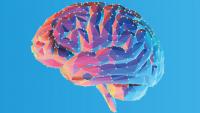What is Cerebral Palsy?

Cerebral palsy (CP) is a group of movement disorders that affect a person’s ability to move and maintain balance and posture.
Cerebral means having to do with the brain. Palsy means having to do with weakness or problems with using the muscles. CP affects the part of the brain that controls muscle movements and is the most common motor disability in childhood. This condition is usually detected in infancy or early childhood and is lifelong condition that affects how the brain coordinates the body's muscles.
Cerebral palsy (CP) is an umbrella term for a group of disorders caused by a nonprogressive lesion to the developing brain. The two largest groups of movement disorders in CP are spasticity (77% to 93%) and dyskinesias (2% to 15%). Sometimes both movement disorders can be present at the same time.
What Are Movement Disorders?
Movement disorders are abnormal movements that are the result of brain damage (central nervous system injury) and noticed as the patient’s inability or difficulty to move their arms, legs, head, neck, and trunk in a purposeful way.
Causes of Cerebral Palsy
Cerebral palsy is caused by abnormal brain development or damage to the developing brain that affects a person’s ability to control his or her muscles. This damage can happen during pregnancy, at birth, or in the first years of a child’s life.
Who Is Affected by Cerebral Palsy?
Cerebral palsy affects two out of every 1,000 live births and may be related to intrauterine stroke, a gene mutation causing brain abnormality, lack of oxygen to the brain, or fetal injection. However, in most causes the exact cause is undetermined.
